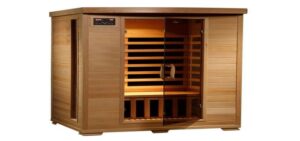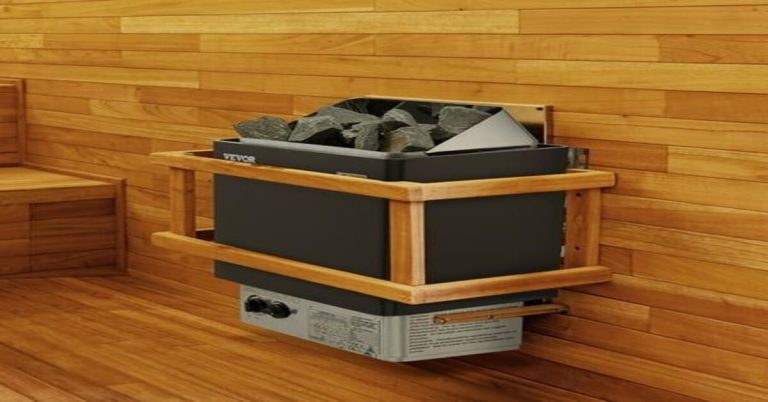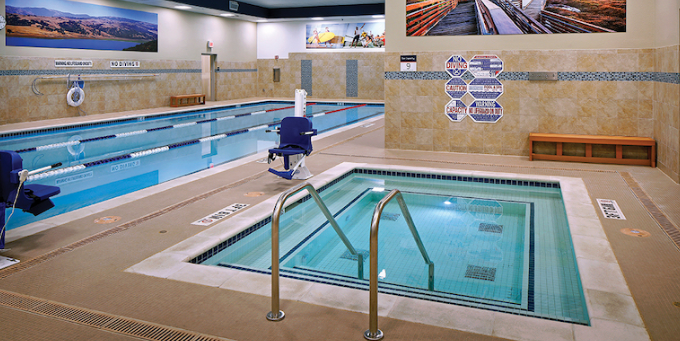The decision between carbon vs. ceramic heaters is a crucial factor that has gained attention due to the increasing use of infrared home saunas, especially among those looking to improve their relaxation and detoxification. Ceramic heaters are frequently the best choice for infrared sauna installation at home. Ceramic heaters, well-known for their dependability and affordability, provide efficient warmth at a reasonable price.
Although carbon heaters require a larger initial expenditure, they have longer operating lifetimes, guaranteeing continuous use and providing more even heating for the best possible spa experience. Investigate the differences, advantages, and disadvantages of carbon and ceramic heaters in more detail to provide yourself with the information you need to construct or change your home cabin properly.
Table of Contents
Carbon vs. Ceramic Sauna Heaters
Carbon vs. ceramic heater saunas are two common choices that have certain benefits. Carbon heaters supply heat in an even manner, maintaining a comfortable temperature in the bathroom. Also, they often release fewer electromagnetic fields (EMF), which makes them a better option for people who are worried about sensitivity.
However, ceramic heaters generate stronger heat and reach higher temperatures faster. Although they might not provide as much consistency as carbon heaters, they are frequently chosen since they can produce a hotter spa experience faster. In the end, personal preferences for heat strength, consistency, and worries about electromagnetic field (EMF) exposure will determine which carbon or ceramic heater is best.
Carbon sauna heaters

When carbon fiber technology was introduced in 2009, it completely changed the sauna business by providing softer panels with carbon heaters than their ceramic rivals. Because of this innovation, carbon heaters are especially preferred for larger spas since they provide a wider blanket of heat. Usually seen in low-temperature infrared baths that radiate near- and medium-infrared light, carbon heaters are a more recent and complex innovation.
One of their primary benefits is that they don’t have to reach the high temperatures observed in traditional saunas to produce heat that can enter under the skin’s surface. The larger surface area of carbon heaters improves their capacity to generate far-infrared wavelengths at lower surface temperatures, allowing for longer sauna sessions. Because they operate at lower temperatures, there is less chance of burning while still producing energy and transferring heat with excellent efficiency.
Benefits:
- Even Heat Distribution: Maintain a constant temperature in the sauna area.
- Efficiency: To heat more effectively, use infrared technology.
- Extended Lifespan: Provide a longer operating lifespan while lowering the need for replacements.
Risks:
- More expensive: In comparison to ceramic heaters, the initial outlay is usually more expensive.
- Installation Complexity: Because of size and electrical issues, professional installation may be necessary.
- Sensitivity: In the event of reckless handling, it may be more open to harm.
Ceramic sauna heaters

Ceramic heaters were first used in Japan in the 1970s for medicinal purposes, and they are now a crucial component of infrared sauna technology. These heaters use ceramic rods to emit the infrared wavelengths needed for heating applications. The way far infrared ceramic heaters are made determines how effective they are. Shorter wavelengths from single rod elements provide near-infrared radiation, which has a limited heat conductivity.
Concave areas or cone-shaped ceramic heaters, on the other hand, allow for deeper heat penetration since they emit more infrared radiation, especially at far-infrared wavelengths. The fact that ceramic heaters do not pose the risk of metal poisoning that comes with materials like lead or aluminum is a major safety benefit. Those who want to reduce their contact with these metals will thus use ceramic heaters.
Benefits:
- Quick Heating: Sauna sessions may begin more quickly when the spa heats up quickly.
- Cost-effectiveness: In general, less expensive than carbon heaters.
- Reliability: technology that has been tested and shown to be reliable.
Risks:
- Inequitable Heat Distribution: The distribution of heat might be less equitable than that of carbon heaters.
- Short Lifespan: Compared to carbon heaters, this part might need to be updated more frequently.
- Energy Consumption: Over time, it may prove to be more inefficient than carbon heaters.
Differences between carbon and ceramic heaters

Differentiating between carbon and ceramic heaters is given below:
Heating Process:
- Ceramic Heaters: These heaters use ceramic rods to radiate heat at infrared wavelengths.
- Carbon Heaters: These heaters use carbon fibers to produce infrared heat.
Heat Transfer:
- Ceramic heaters: Ceramic heaters have the potential to distribute heat unevenly, especially when using single-rod components.
- Carbon heaters: Carbon heaters provide a more uniform dispersion of heat over the sauna area.
Energy Effectiveness:
- Ceramic heaters: Warming up quickly, ceramic heaters tend to use more power over time.
- Carbon heaters: Carbon heaters are known for their optimal heating performance and energy efficiency.
Duration of Life:
- Ceramic heaters: In comparison to carbon heaters, ceramic heaters typically have a shorter running lifespan.
- Carbon heaters: Carbon heaters provide a longer lifespan via increased operating durability.
Price:
- Ceramic heaters: Ceramic heaters are usually less expensive upfront than carbon heaters.
- Carbon heaters: Carbon heaters charge more at first, but because they last longer and are more efficient, they could be more valuable in the long run.
Security:
- Ceramic Heaters: Steer clear of the risks brought on by metal toxicity in materials such as lead and aluminum.
- Carbon heaters: Carbon heaters are generally safe, but handling them carefully can help avoid injury.
Which type of heater is best for a sauna—ceramic or carbon?
Ceramic and carbon heaters are your two primary alternatives when choosing a heater for your home spa. Because ceramic heaters require less initial investment and provide faster heating periods, this is often the better option. Although carbon heaters have improved lifetime and efficiency, their relatively recent arrival on the market and higher initial costs may put off ordinary sauna followers.
Ceramic heaters are less expensive and take less time to achieve ideal temperatures, but they usually last for around 5,000 hours before breaking down from exposure to heat. Because ceramic technology has been around for so long, it has been successful in the sauna sector.
Conversely, carbon heaters are a more recent technical development that boasts superior heat-emitting efficiency at lower temperatures. Carbon heaters have a long lifespan—up to 100,000 hours—and provide long-term advantages. But although a carbon heater could eventually prove to be a wise purchase for those who can afford it, it might not be appropriate in all circumstances.
Can carbon and ceramic be used together?
It is possible and frequently seen in premium infrared saunas to combine ceramic and carbon heaters, especially with more recent and expensive ceramic types. The greatest infrared bath locations will typically integrate two types of heaters side by side, creating an even more superior and improved relaxing space. By combining carbon heaters with more recent ceramic technology, spa experiences may be improved and become more comfortable and effective.
Can you replace a ceramic heater with a carbon heater?
It’s doubtful that your home sauna will require a ceramic or carbon heater specifically. Moving from the old heater to the new one should be quite easy if the requirements match. It’s important to confirm the heaters’ voltage compatibility and physical dimensions before moving forward with the update. In general, carbon heaters are bigger than conventional ceramic heaters. Before making a move, it is crucial to confirm suitability in terms of space and electric needs.
FAQs
The most frequently asked questions are given below:
Are carbon or ceramic heaters better for saunas?
Since carbon fiber heaters can heat the body faster and deeply absorb infrared waves, they need less power than ceramic heaters while having lower surface temperatures. To heat the whole sauna, ceramic heaters must reach a maximum temperature of 150°F.
What is the best heat-type sauna?
A sauna heater that runs on natural gas is a convenient option if you’re looking for a dependable heat source that doesn’t require wood or an electrical connection. Infrared heaters that operate on gas or propane provide uniform, penetrating heat. A propane tank or gas line heats a metal plate in the sauna area to a temperature between 175 and 190 degrees Fahrenheit.
What are the benefits of a ceramic sauna?
Ceramic spas could provide a faster heat-up time and a more powerful heating sensation, even if carbon spas might have certain technological and energy-efficient advantages.







